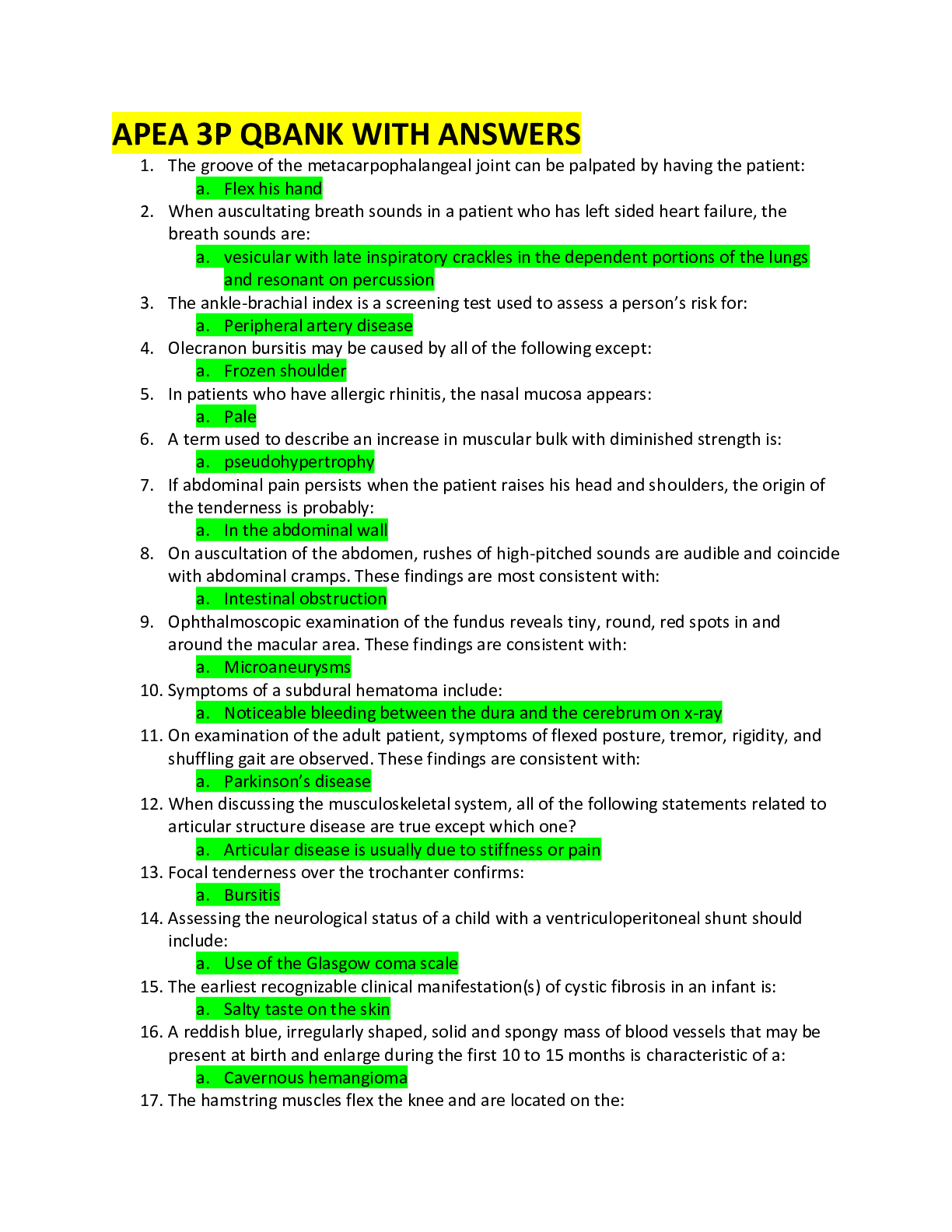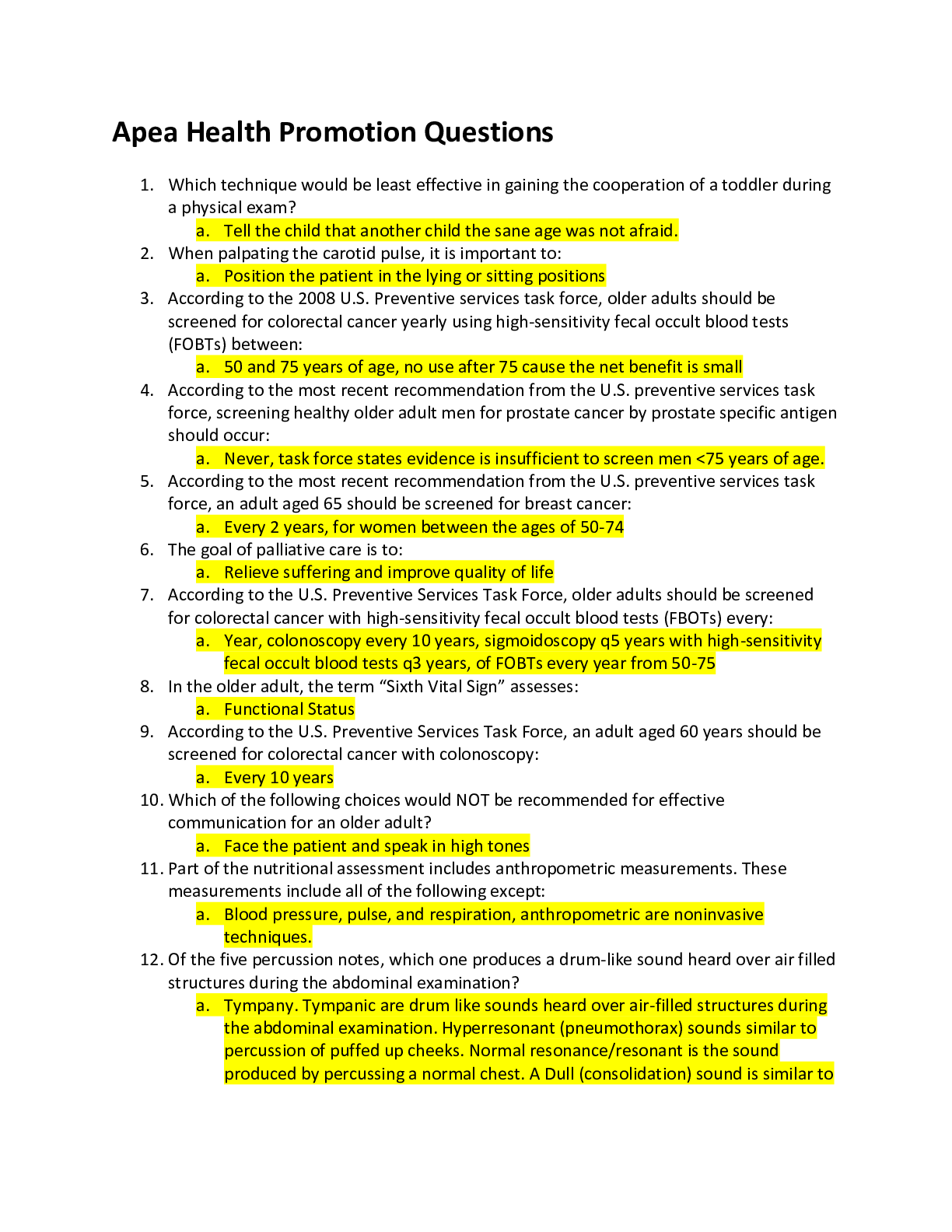OB Maternity HESI > EXAM > 2023 OB Maternity HESI EXIT Practice V1 TEST BANK Questions and Answers with Explanations (All)
2023 OB Maternity HESI EXIT Practice V1 TEST BANK Questions and Answers with Explanations
Document Content and Description Below
2023 OB Maternity HESI EXIT Practice V1 TEST BANK Questions and Answers with Explanations 1. A 22-year-old nulligravid client tells the nurse that she and her husband have been considering using c... ondoms for family planning. Which of the following instructions should the nurse include about the use of condoms as a method for family planning? 1. Using a spermicide with the condom offers added protection against pregnancy. 2. Natural skin condoms protect against sexually transmitted diseases. 3. The typical failure rate for couples using condoms is about 25%. 4. Condom users commonly report penile gland sensitivity. {{correct Ans:- 1. The typical failure rate of a condom is approximately 12% to 14%. Adding a spermicide can decrease this potential failure rate because it offers additional protection against pregnancy. Natural skin condoms do not offer the same protection against sexually transmitted diseases caused by viruses as latex condoms do. Unlike latex condoms, natural skin (membrane) condoms do not prevent the passage of viruses. Most condom users report decreased penile gland sensitivity. However, some users do report an increased sensitivity or allergic reaction (such as a rash) to latex, necessitating the use of another method of family planning or a switch to a natural skin condom. CN: Health promotion and maintenance; CL: Apply 2. Which of the following would the nurse include in the teaching plan for a 32- year-old female client requesting information about using a diaphragm for family planning? 1. Douching with an acidic solution after intercourse is recommended. 2. Diaphragms should not be used if the client develops acute cervicitis. 3. The diaphragm should be washed in a weak solution of bleach and water. 4. The diaphragm should be left in place for 2 hours after intercourse. {{correct Ans:- . 2. The teaching plan should include a caution that a diaphragm should not be used if the client develops acute cervicitis, possibly aggravated by contact with the rubber of the diaphragm. Some studies have also associated diaphragm use with increased incidence of urinary tract infections. Douching after use of a diaphragm and intercourse is not recommended because pregnancy could occur. The diaphragm should be inspected and washed with mild soap and water after each use. A diaphragm should be left in place for at least 6 hours but no longer than 24 hours after intercourse. More spermicidal jelly or cream should be used if intercourse is repeated during this period. CN: Reduction of risk potential; CL: Create 3. After being examined and fitted for a diaphragm, a 24-year-old client receives instructions about its use. Which of the following client statements indicates a need for further teaching? 1. "I can continue to use the diaphragm for about 2 to 3 years if I keep it protected in the case." 2. "If I get pregnant, I will have to be refitted for another diaphragm after childbirth." 3. "Before inserting the diaphragm, I should coat the rim with contraceptive jelly." 4. "If I gain or lose 20 lb (9.1 kg), I can still use the same diaphragm." {{correct Ans:- . 4. The client would need additional instructions when she says that she can still use the same diaphragm if she gains or loses 20 lb (9.1 kg). Gaining or losing more than 15 lb (6.8 kg) can change the pelvic and vaginal contours to such a degree that the diaphragm will no longer protect the client against pregnancy. The diaphragm can be used for 2 to 3 years if it is cared for and well protected in its case. The client should be refitted for another diaphragm after pregnancy and childbirth because weight changes and physiologic changes of pregnancy can alter the pelvic and vaginal contours, thus affecting the effectiveness of the diaphragm. The client should use a spermicidal jelly or cream before inserting the diaphragm. CN: Reduction of risk potential; CL: Evaluate 4. A 22-year-old client tells the nurse that she and her husband are trying to conceive a baby. When teaching the client about reducing the incidence of neural tube defects, the nurse would emphasize the need for increasing the intake of which of the following foods? Select all that apply. 1. Leafy green vegetables. 2. Strawberries. 3. Beans. 4. Milk. 5. Sunflower seeds. 6. Lentils. {{correct Ans:- 1,2,3,5,6. The pregnancy requirement for folic acid is 600 mcg/day. Major sources of folic acid include leafy green vegetables, strawberries and oranges, beans, particularly black and kidney beans, sunflower seeds, and lentils. Milk and fats contain no folic acid. CN: Health promotion and maintenance; CL: Apply 5. A couple is inquiring about vasectomy as a permanent method of contraception. Which teaching statement would the nurse include in the teaching plan? 1. "Another method of contraception is needed until the sperm count is 0." 2. "Vasectomy is easily reversed if children are desired in the future." 3. "Vasectomy is contraindicated in males with prior history of cardiac disease." 4. "Vasectomy requires only a yearly follow-up once the procedure is completed." {{correct Ans:- 1. Another method of contraception is needed until all sperm has been cleared from the body. The number of ejaculates for this to occur varies with the individual and laboratory analysis is required to determine when that has been accomplished. Vasectomy is considered a permanent sterilization procedure and requires microsurgery for anastomosis of the vas deferens to be completed. Studies have shown that there is no connection between cardiac disease in males and vasectomy. There is no need for follow-up after verification that there is no sperm in the system. CN: Physiological adaptation; CL: Create 6. A 39-year-old multigravid client asks the nurse for information about female sterilization with a tubal ligation. Which of the following client statements indicates effective teaching? 1. "My fallopian tubes will be tied off through a small abdominal incision." 2. "Reversal of a tubal ligation is easily done, with a pregnancy success rate of 80%." 3. "After this procedure, I must abstain from intercourse for at least 3 weeks." 4. "Both of my ovaries will be removed during the tubal ligation procedure." {{correct Ans:- 1. Tubal ligation, a female sterilization procedure, involves ligation (tying off) or cauterization of the fallopian tubes through a small abdominal incision (laparotomy). Reversal of a tubal ligation is not easily done, and the pregnancy success rate after reversal is about 30%. After a tubal ligation, the client may engage in intercourse 2 to 3 days after the procedure. The ovaries are not generally removed during a tubal ligation. An oophorectomy involves removal of one or both ovaries. CN: Health promotion and maintenance; CL: Evaluate 7. A 23-year-old nulliparous client visiting the clinic for a routine examination tells the nurse that she desires to use the basal body temperature method for family planning. The nurse should instruct the client to do which of the following? 1. Check the cervical mucus to see if it is thick and sparse. 2. Take her temperature at the same time every morning before getting out of bed. 3. Document ovulation when her temperature decreases at least 1°F (0.56°C). 4. Avoid coitus for 10 days after a slight rise in temperature. {{correct Ans:- 2. The basal body temperature method requires that the client take her temperature each morning before getting out of bed, preferably at the same time each day before eating or any other activity. Just before the day of ovulation, the temperature falls by 0.5°F (0.28°C). At the time of ovulation, the temperature rises 0.4°F to 0.8°F (0.22°C to 0.44°C) because of increased progesterone secretion in response to the luteinizing hormone. The temperature remains higher for the rest of the menstrual cycle. The client should keep a diary of about 6 months of menstrual cycles to calculate "safe" days. There is no mucus for the first 3 or 4 days after menses, and then thick, sticky mucus begins to appear. As estrogen increases, the mucus changes to clear, slippery, and stretchy. This condition, termed spinnbarkeit, is present during ovulation. After ovulation, the mucus decreases in amount and becomes thick and sticky again until menses. Because the ovum typically survives about 24 hours and sperm can survive up to 72 hours, couples must avoid coitus when the cervical mucus is copious and for about 3 to 4 days before and after ovulation to avoid a pregnancy. CN: Health promotion and maintenance; CL: Apply [Show More]
Last updated: 1 year ago
Preview 1 out of 24 pages
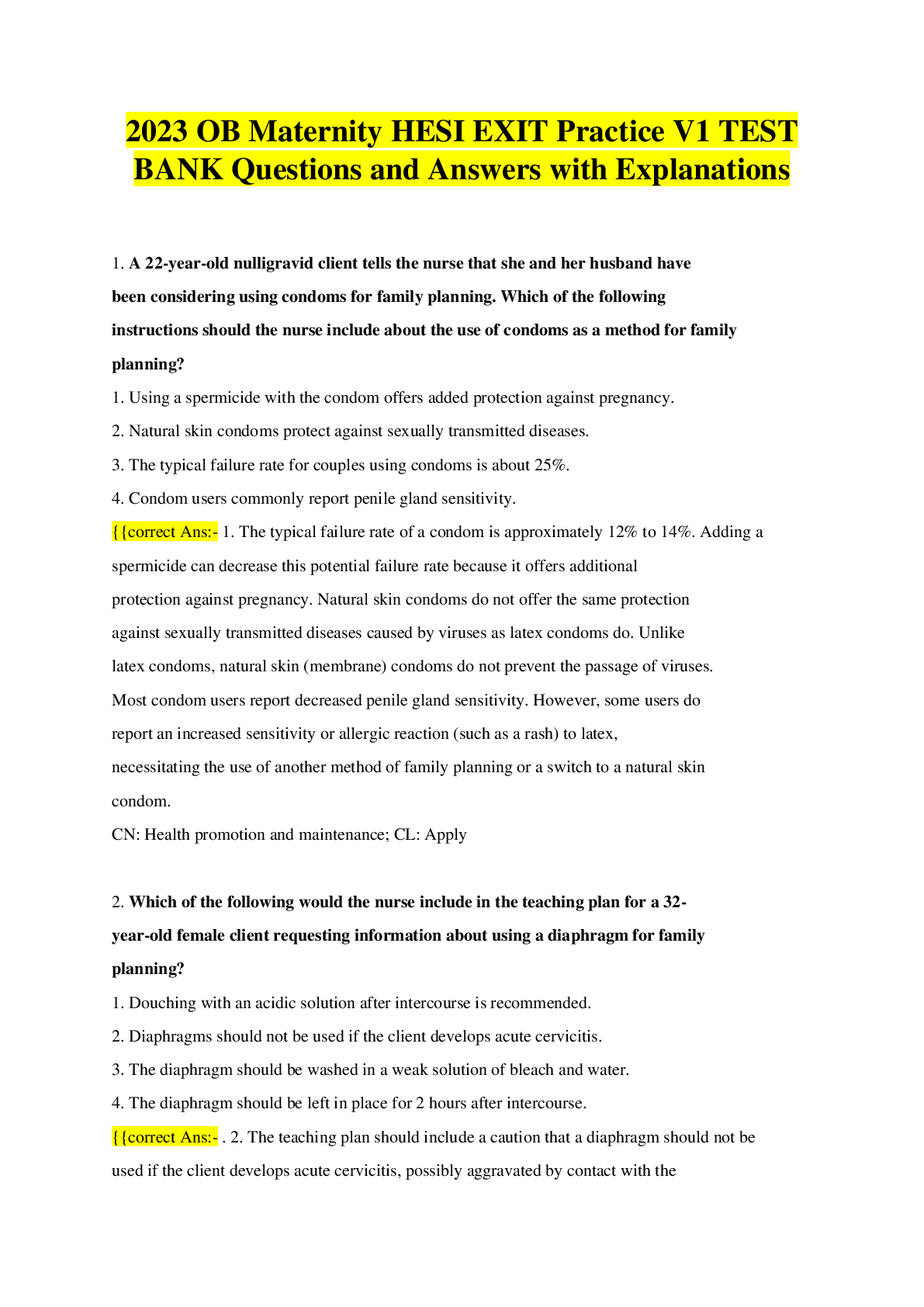
Buy this document to get the full access instantly
Instant Download Access after purchase
Add to cartInstant download
We Accept:

Reviews( 0 )
$9.00
Document information
Connected school, study & course
About the document
Uploaded On
May 24, 2023
Number of pages
24
Written in
Additional information
This document has been written for:
Uploaded
May 24, 2023
Downloads
0
Views
46


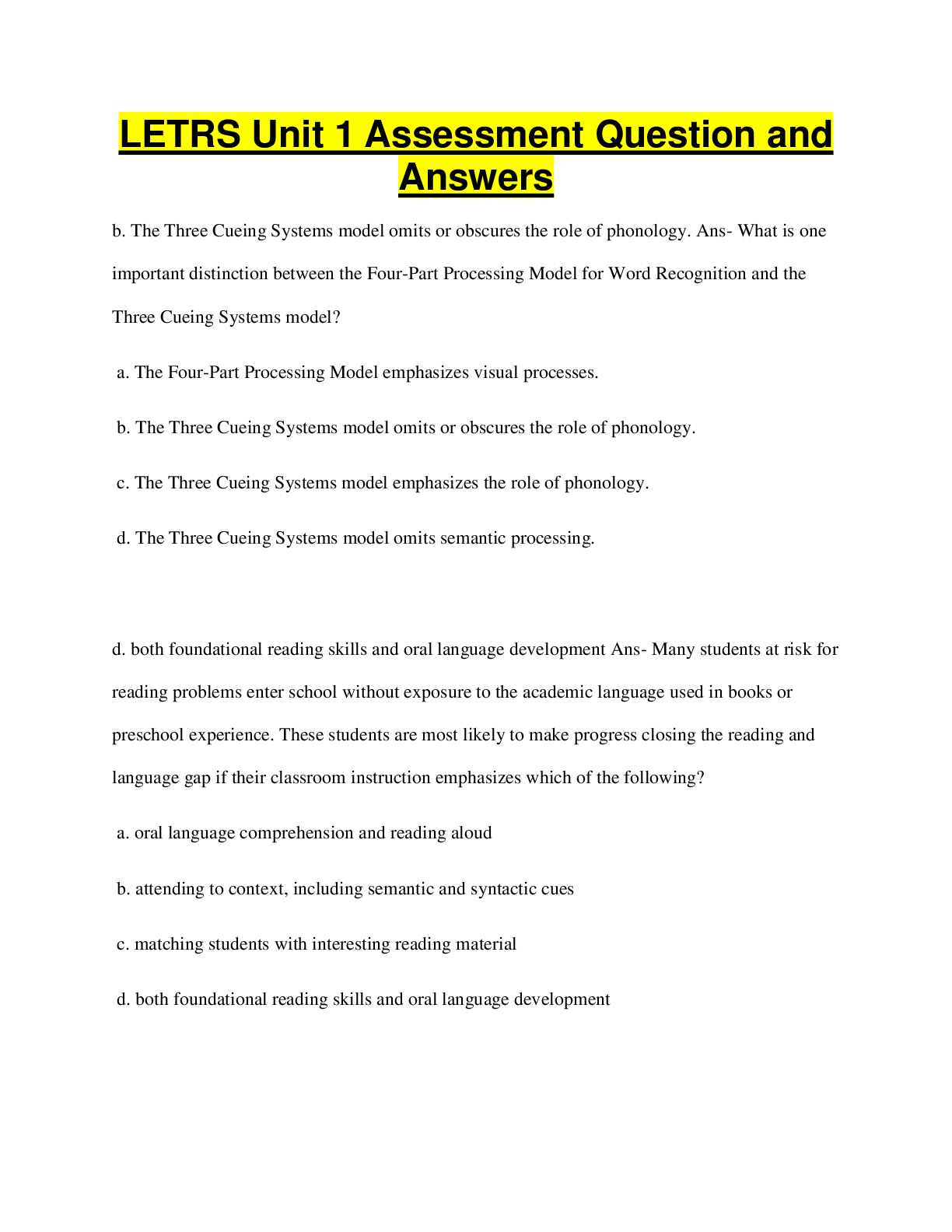


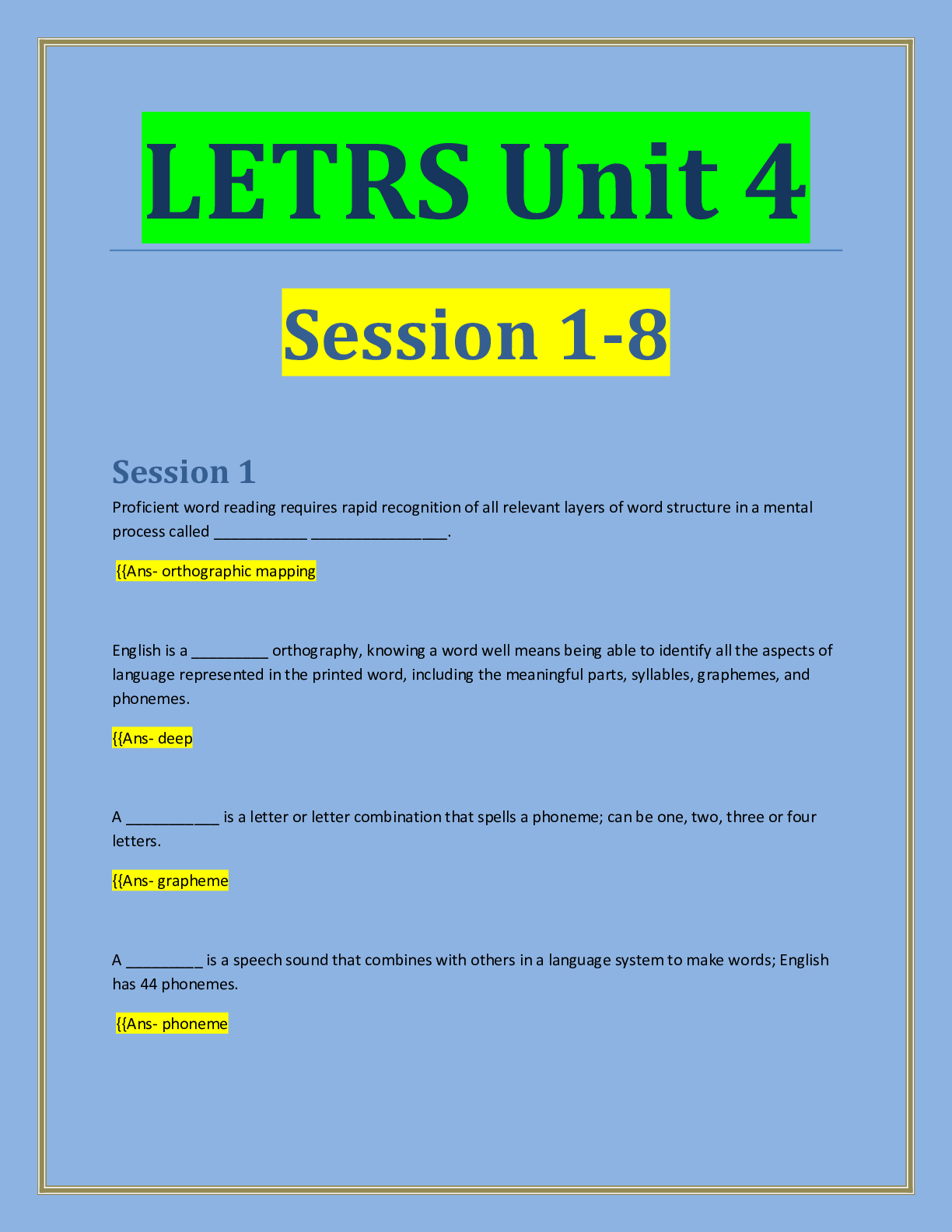

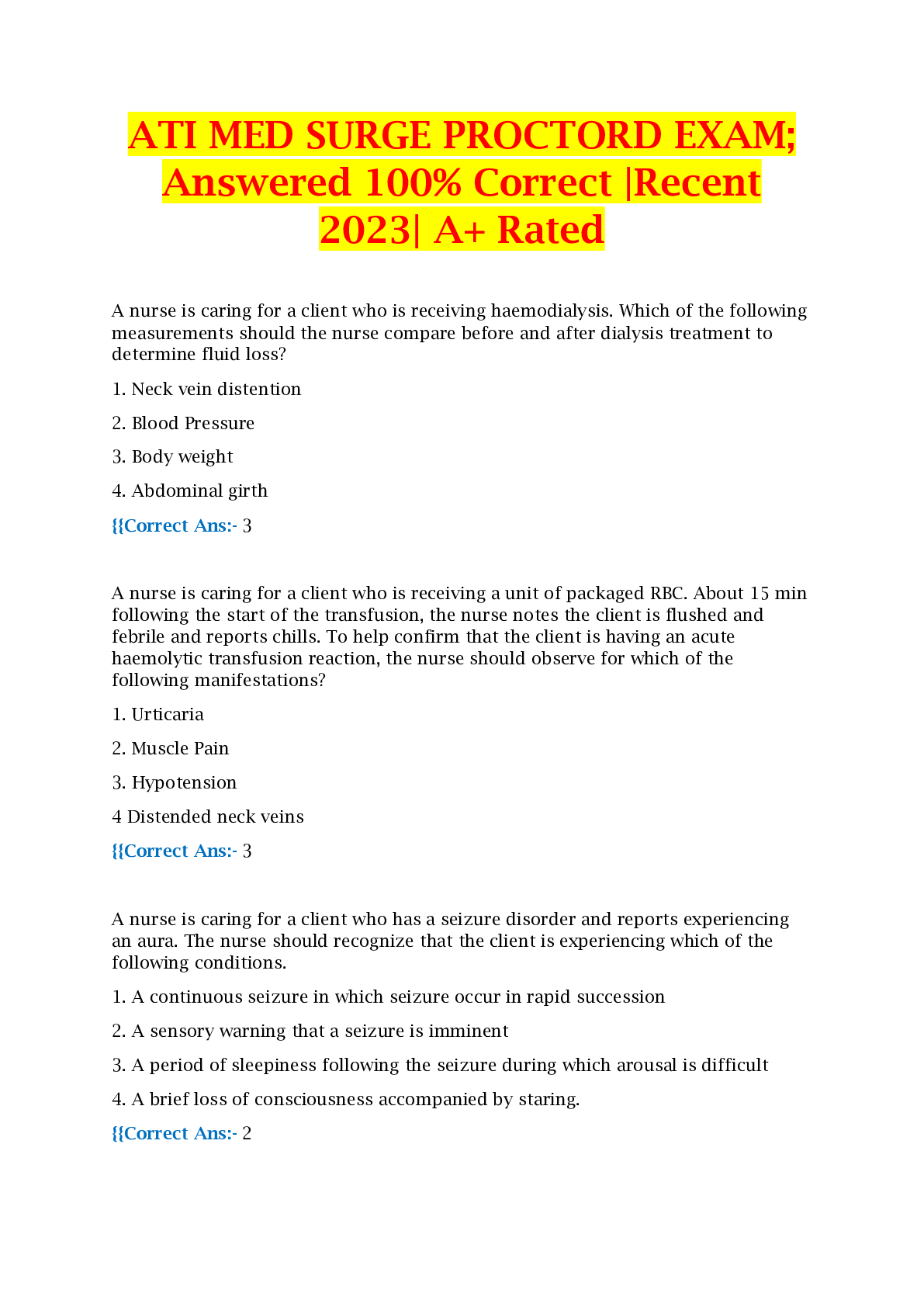


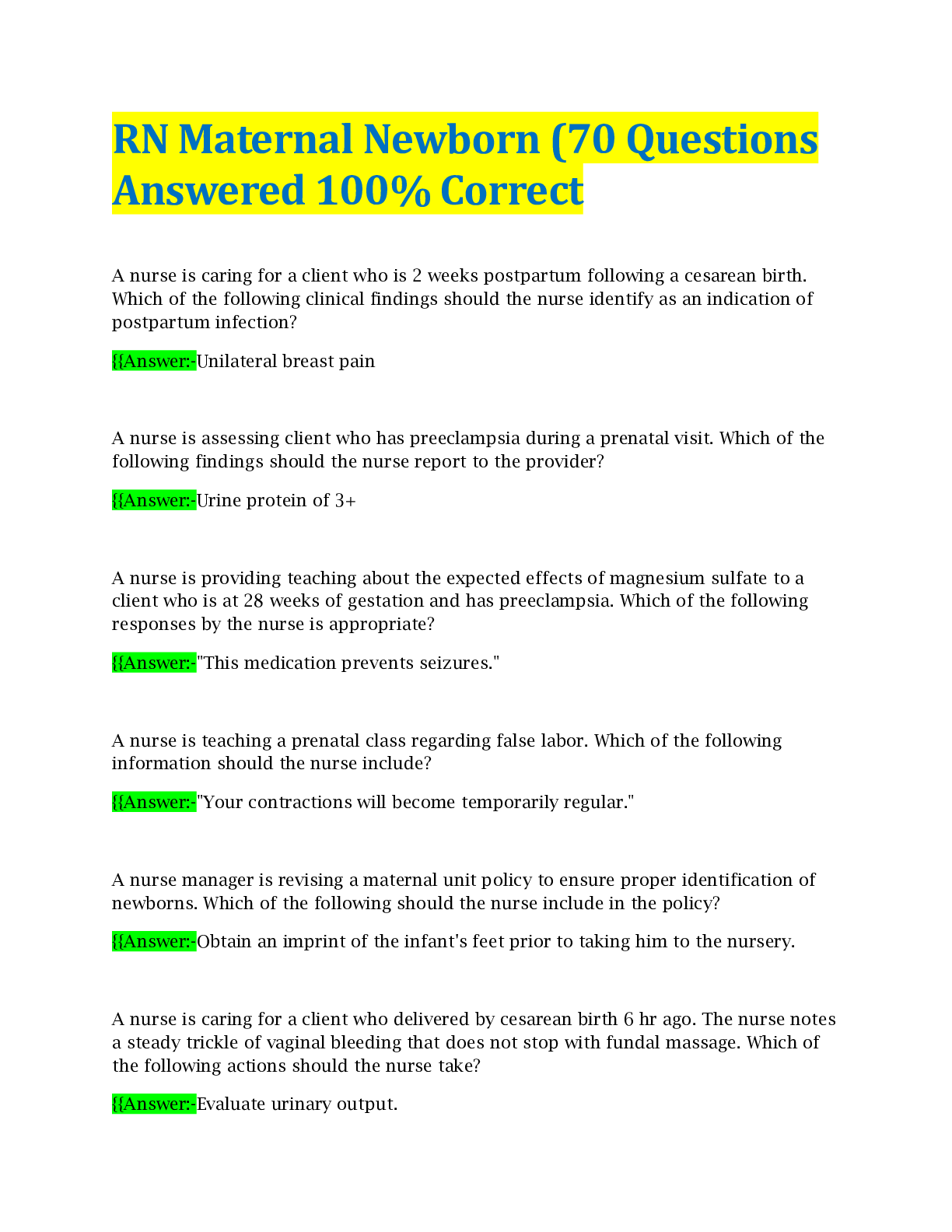
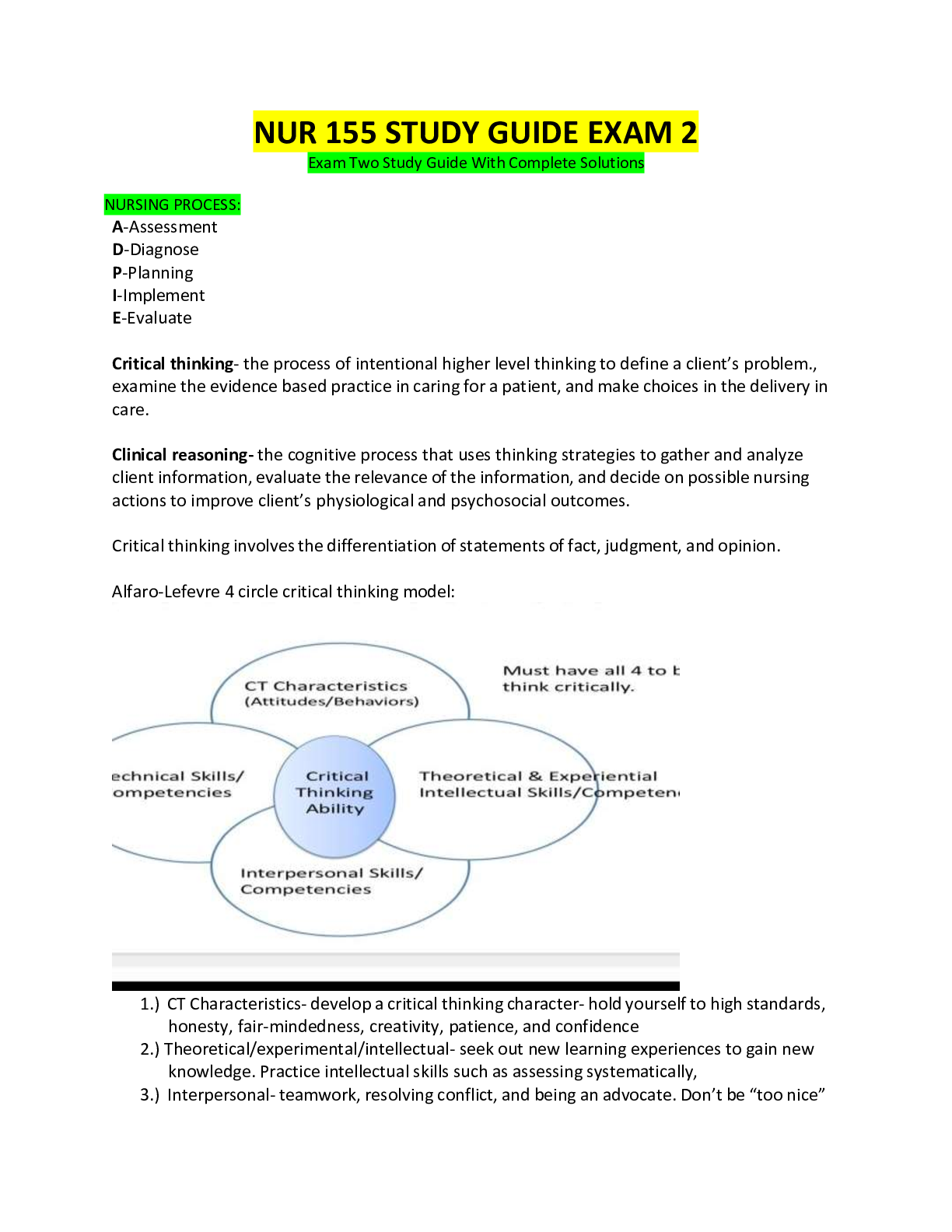
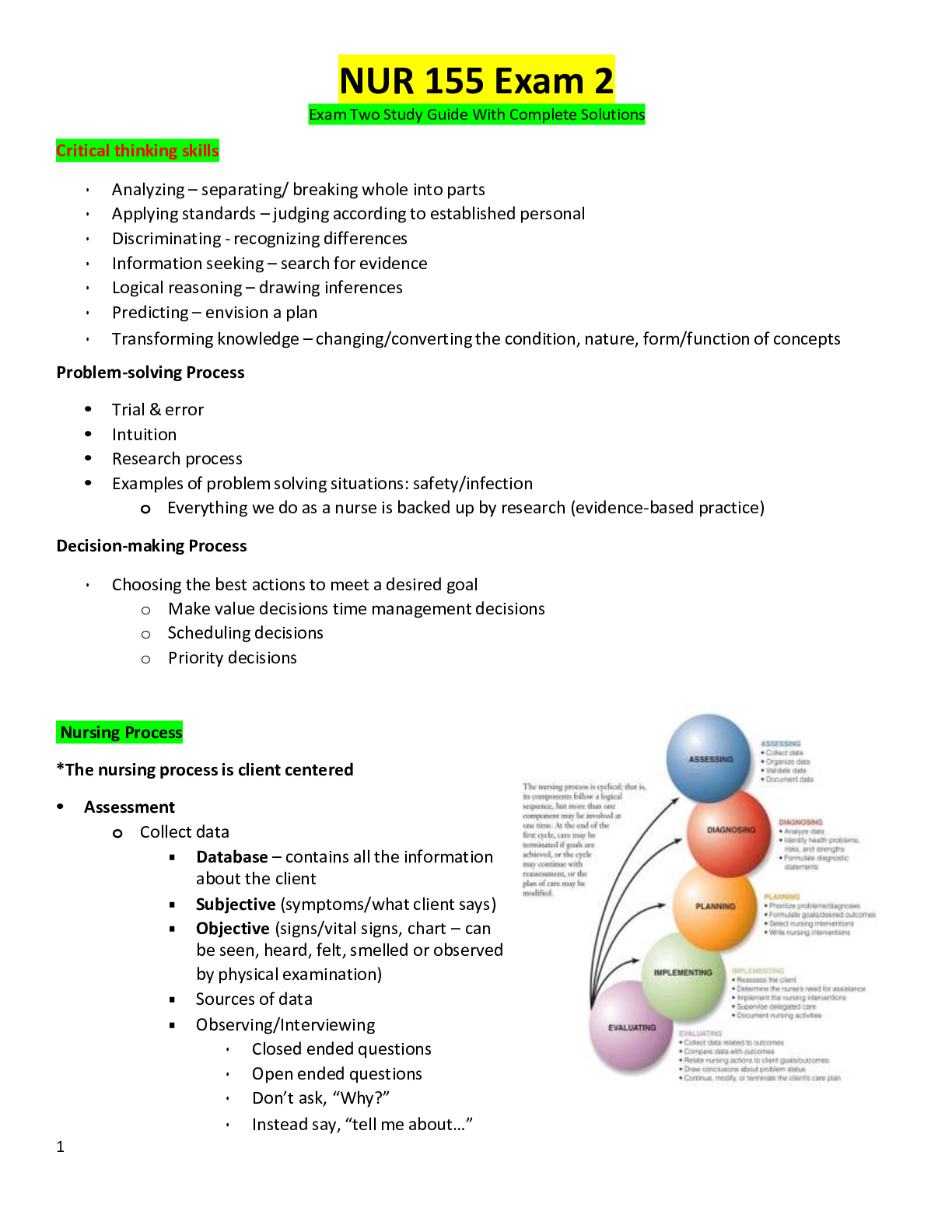

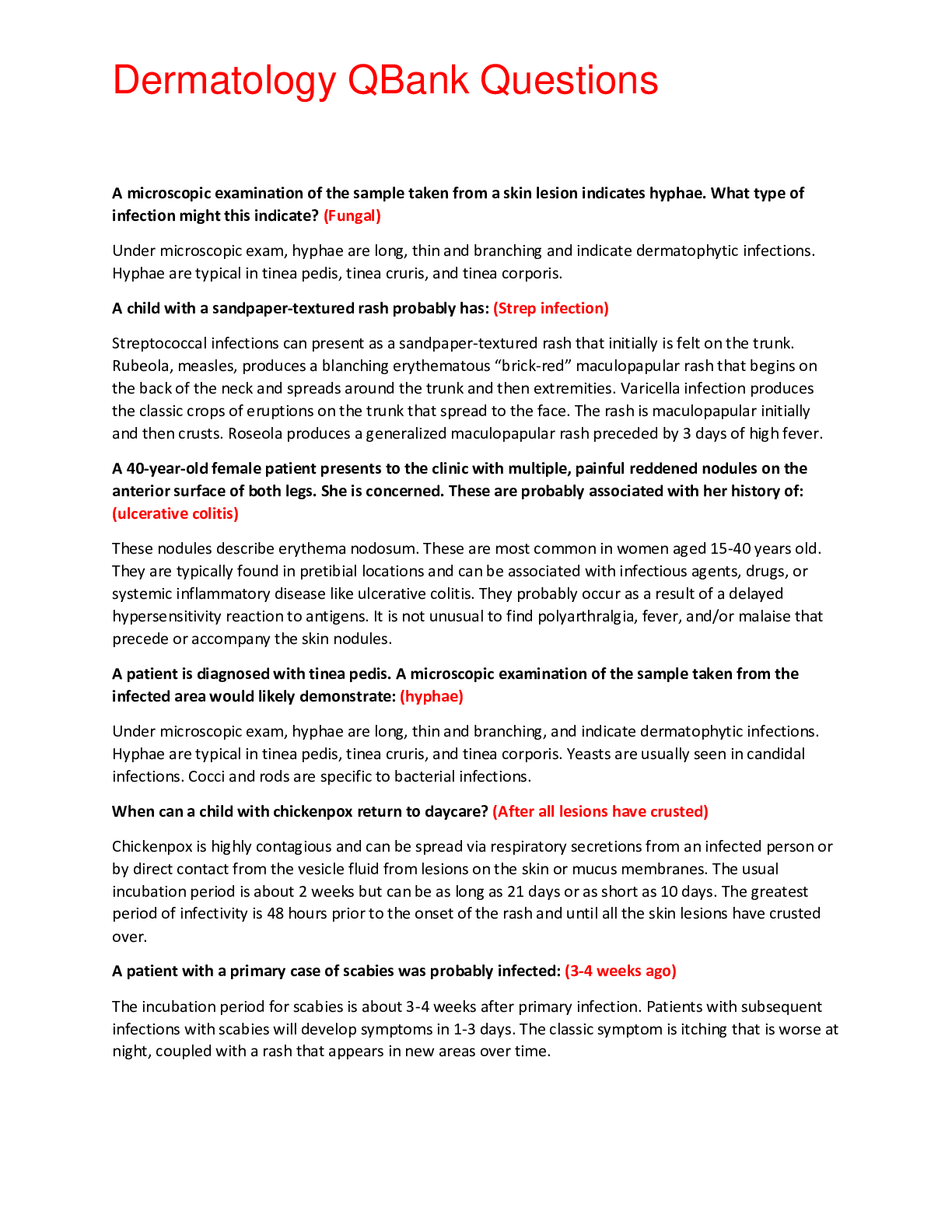


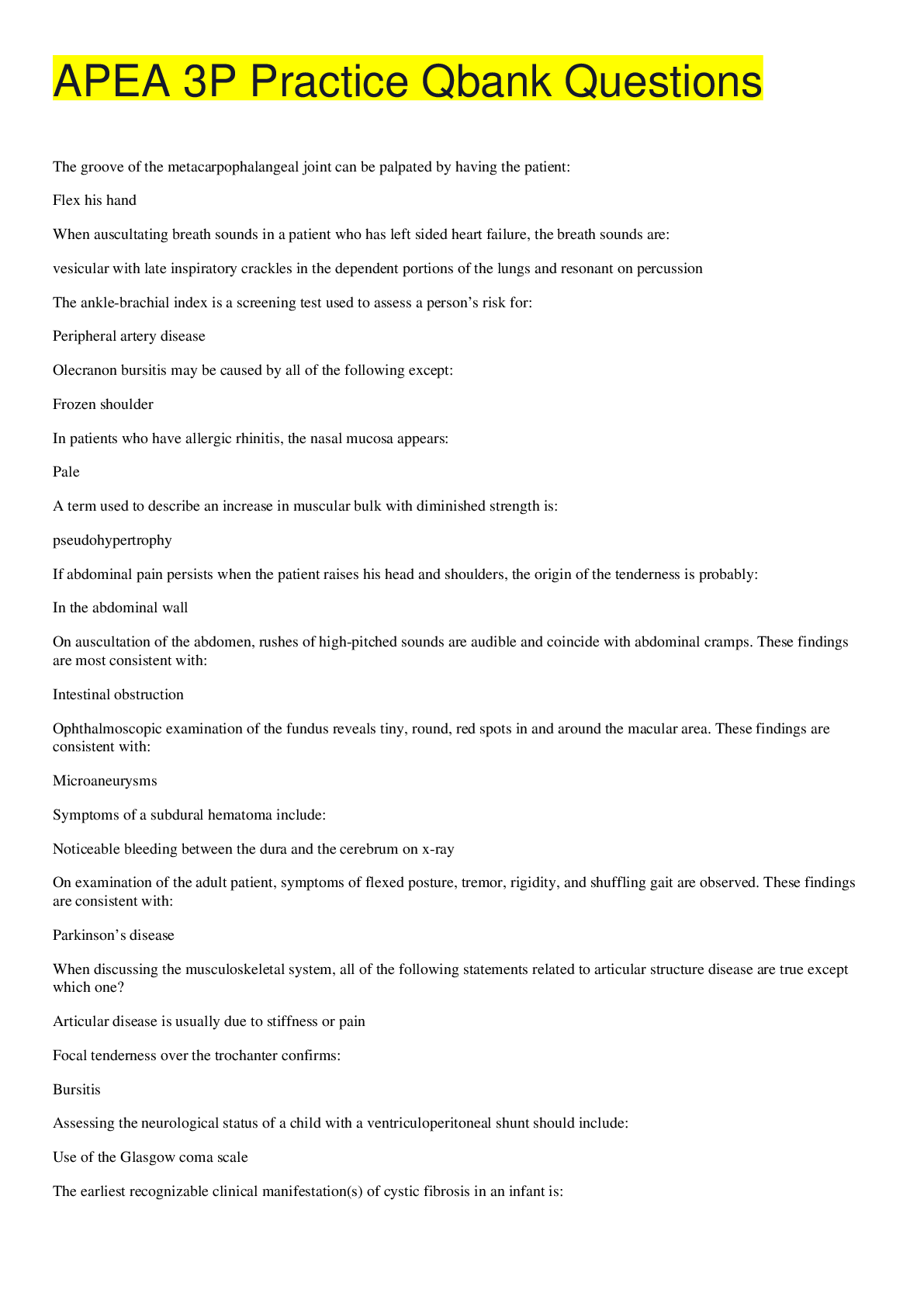


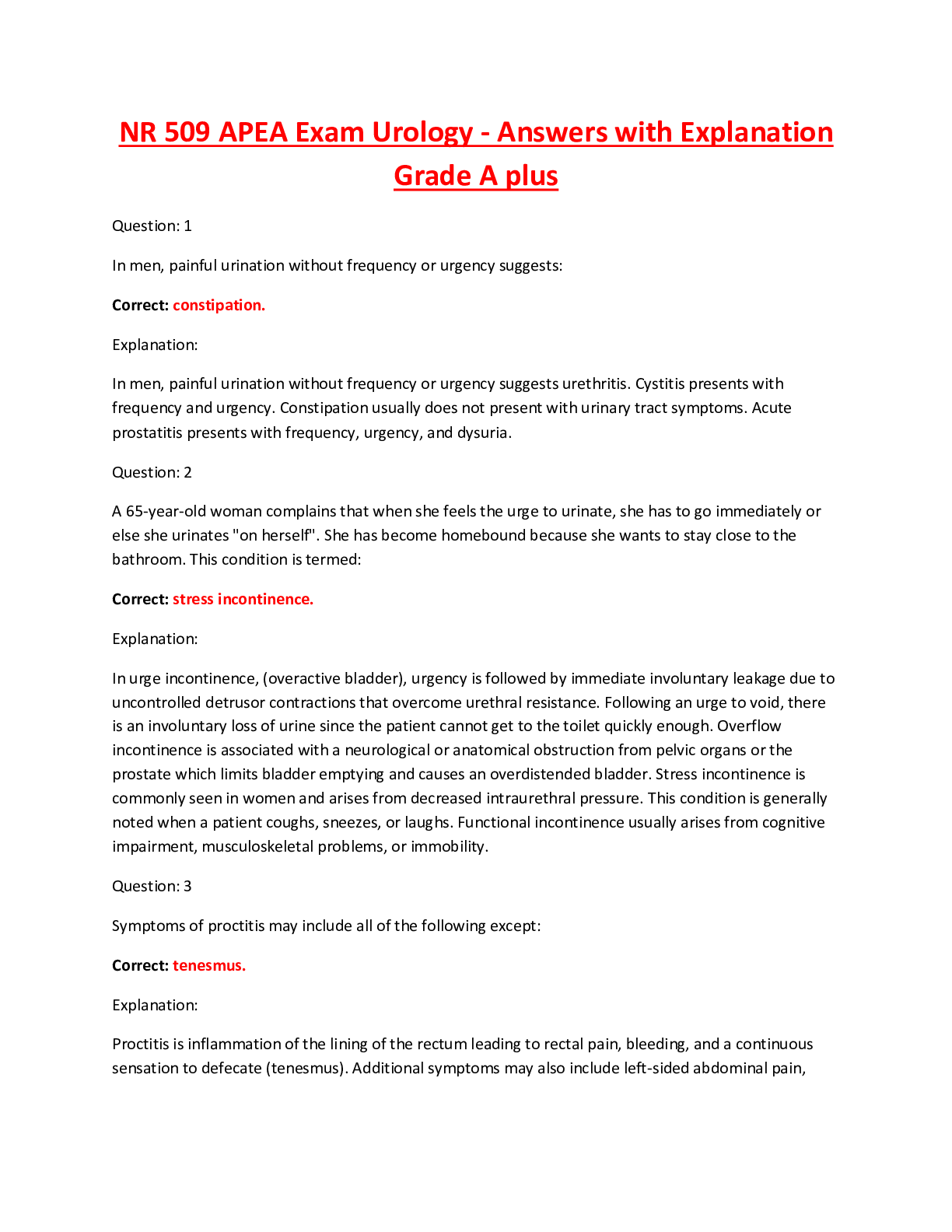
 – Chamberlain College of Nursing.png)
